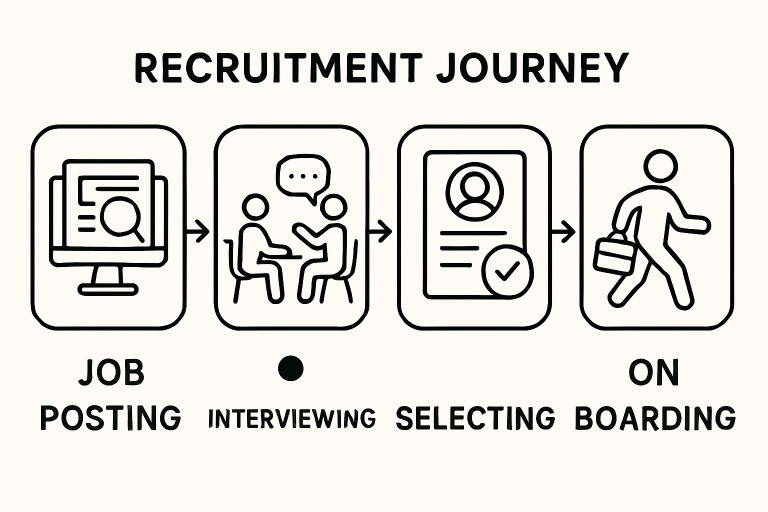Contents
- 1 Why Streamlining Your Recruitment Journey Matters
- 2 Using Technology to Simplify Application Tracking
- 3 Prioritizing Candidate Experience
- 4 Structured Interviews: Consistency and Fairness
- 5 Data-Driven Decisions in Recruitment
- 6 Optimizing the Onboarding Process
- 7 Future-Proofing Your Recruitment Process
Why Streamlining Your Recruitment Journey Matters
In today’s talent-driven market, organizations need a streamlined, effective recruiting process to accelerate hiring, engage candidates, and attract top talent. An efficient approach showcases professionalism, benefits convenience, and enhances employer branding. According to SHRM, speed and clarity are key to connecting with desirable candidates. Streamlined strategies reduce dropout rates, mis-hire, turnover costs, and increase manager satisfaction. Starting with a unified vision among recruiters, managers, and interviewers prevents miscommunication and speeds up decisions. Clarify hiring goals—what gap, essential skills, and traits—collaboratively to stay focused and avoid mismatched candidates. Job descriptions should reflect responsibilities, culture, and growth opportunities honestly to attract motivated applicants, as Harvard Business Review emphasizes.
Using Technology to Simplify Application Tracking
Leveraging modern applicant tracking systems (ATS) can revolutionize how you sort, rank, and engage with applicants. An ATS streamlines resume reviews, automates repetitive communication, and ensures no promising candidate falls through the cracks. This technical investment leads to measurable improvements in recruiter productivity, reduces administrative errors, and greatly accelerates hiring cycles. The resulting data further empowers talent teams to refine their processes over time.
Prioritizing Candidate Experience
The recruitment journey should be as positive for candidates as it is for employers. Clear communications, rapid feedback, and respectful treatment build goodwill—even among candidates who aren’t ultimately hired. Candidates who feel seen and respected are more likely to become enthusiastic brand advocates or reapply for future openings. Status updates and feedback loops also help reduce common recruitment pitfalls, such as ghosting, contributing to a positive employer reputation in the marketplace.
Structured Interviews: Consistency and Fairness
Implementing structured interviews where all candidates answer the same set of predetermined, role-specific questions supports consistency, equity, and fairness. Interview scorecards and detailed evaluation forms enable interviewers to rate responses objectively while minimizing unconscious bias. This process not only leads to better hiring outcomes but also bolsters your commitment to diversity and inclusion, as detailed by Forbes Human Resources Council.
Data-Driven Decisions in Recruitment
The best hiring teams make decisions based on actionable data. Tracking KPIs—such as time-to-hire, quality of hire, cost-per-hire, and conversion rates—enables organizations to refine their recruiting activities continuously. Reviewing these numbers regularly allows companies to identify bottlenecks, reassess their sourcing channels, and make informed decisions based on evidence rather than assumptions.
Optimizing the Onboarding Process
The hiring process doesn’t end with a signed acceptance letter. Effective onboarding sets the stage for productivity, engagement, and retention. Personalized welcome plans, scheduled check-ins, and clear short-term goals help new hires assimilate faster and feel supported. According to Gallup, organizations with robust onboarding programs experience significantly better employee engagement and retention within the first year.
Future-Proofing Your Recruitment Process
Continuous improvement is crucial for remaining agile as market conditions evolve. Regularly seek feedback from new hires, candidates, and stakeholders to spot opportunities for enhancement. Embrace new technologies, evolve interview and assessment techniques, and invest in the professional development of your talent acquisition team. By embedding adaptability into your recruitment culture, your hiring process remains effective and competitive into the future.
